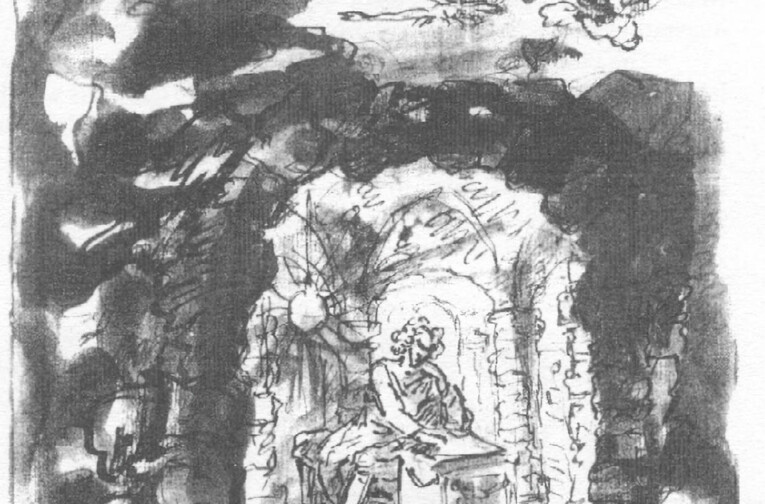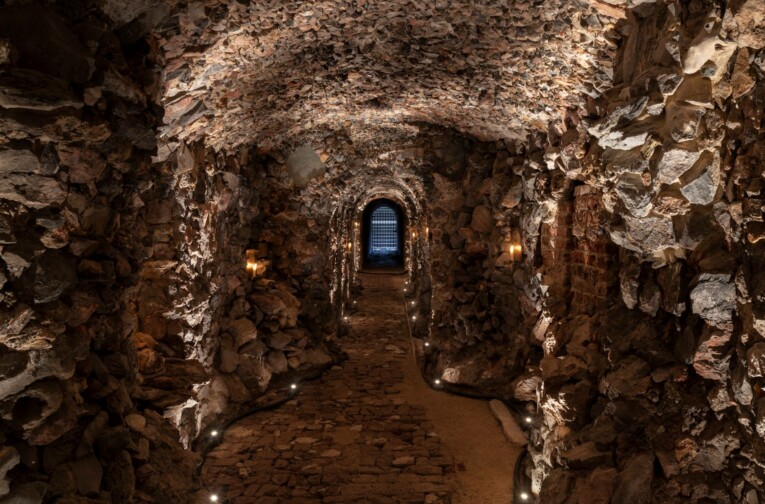Alexander Pope’s Sparkling Vision
- | Ayaka Takaki
A careful restoration of the Grade II*-listed Alexander Pope’s Grotto completed in the spring of 2023. The folly – which is located on the banks of the Thames at Twickenham – is a mine of stones, shells, minerals, and metals devised in 1725 by the Enlightenment Era poet and satirist Alexander Pope. The aim was to connect his garden to the new villa he built in 1720 (sadly demolished in 1808) and as an expression of his creativity and imagination.
Insall has been involved in the grotto since the late 1990s. The first Conservation Management Statement was prepared in 2002 which was subsequently revised and updated as the project progressed; two phases of conservation works were implemented in 2017 and 2022-2023. The project culminated in the Grotto being removed fromHistoric England’s Heritage at Risk Register.
Resurrecting Pope’s vision
We aspired to re-establish the poet’s ‘sparkling’ vision through conserving and restoring Pope’s Grotto.
It was important to us, and our clients at the Pope’s Grotto Preservation Trust, that the proposed works were informed by and incorporated the Grotto’s rich history — partially preserved through Pope’s surviving letters, sketches by William Kent and physical fabric on site. Pope designed the Grotto to frame a view through to the Thames with a network of mirrors and minerals within the Grotto chambers. We learnt much about Pope through the project, not just as a famous poet, but as a person and visionary.
Many individuals, including the client team, Nicolette Duckham the Senior Conservation Officer, the conservator team from Taylor Pearce and our team, have been engaged from the project’s inception over two decades ago. Together we have seen through conservation works of the grotto from the initial assessment, site investigations and trials through to implementing the conservation and alteration works over two phases.

Above: Sketch capturing the atmosphere of the Grotto by William Kent
Through generations of heritage specialists
The project was only possible due to the harmonious environment created by our client over the past two decades. This stability allowed us to connect our older Insall colleagues with our current and newest generations. In 2014, Alan Frost (now a consultant) passed his knowledge of investigation works in the 1990s and early 2000s to me, which informed the Listed Building Consent applications and updated Conservation Management Statement prepared by architect Emily Harris and myself in 2015. We also delivered Phase 1 of the repairs in 2017 with guidance from Alan and Sir Donald.
For Phase 2, between 2022 and 2023, architectural assistant George Mannix and I focused on improving the presentation of the grotto by working closely with the lighting designer and audio-visual consultant to enhance the visitor experience. George produced various sketches and visualisations to convey the ideas. The project enabled us to learn from each other, passing on specialist knowledge and conservation skills through this unique structure whilst incorporating fresh ideas, creativity, and visualisation skills.
Finally, I would like to highlight the passion and rigour of Pope’s Grotto Trustee, Angela Kidner, who has been fundamental to the delivery of the project. I want to thank Angela for her support over the last two decades and for trusting us to restore this exceptional historic feature. We would also like to thank the Grotto owners Radnor House School for their support.
Read the full 2023 Review here
